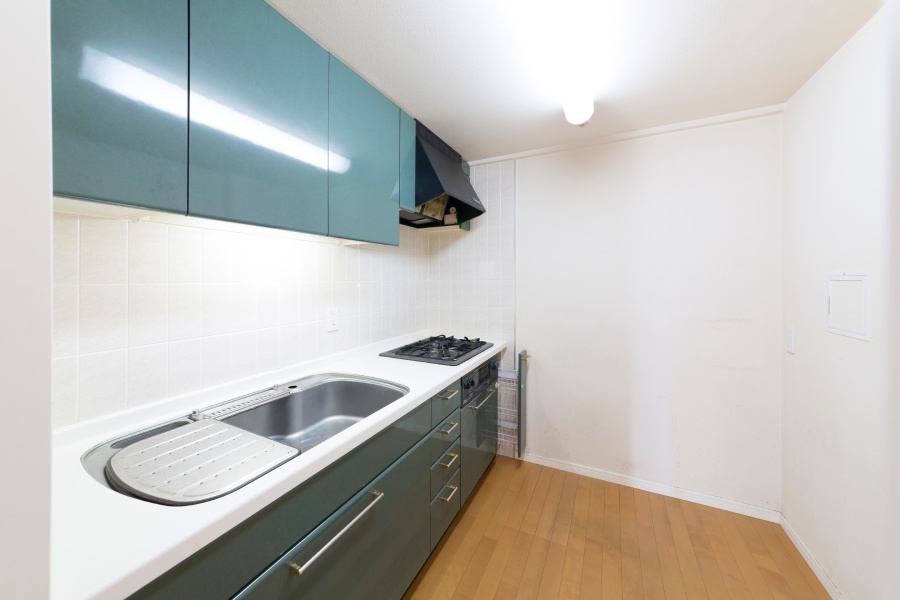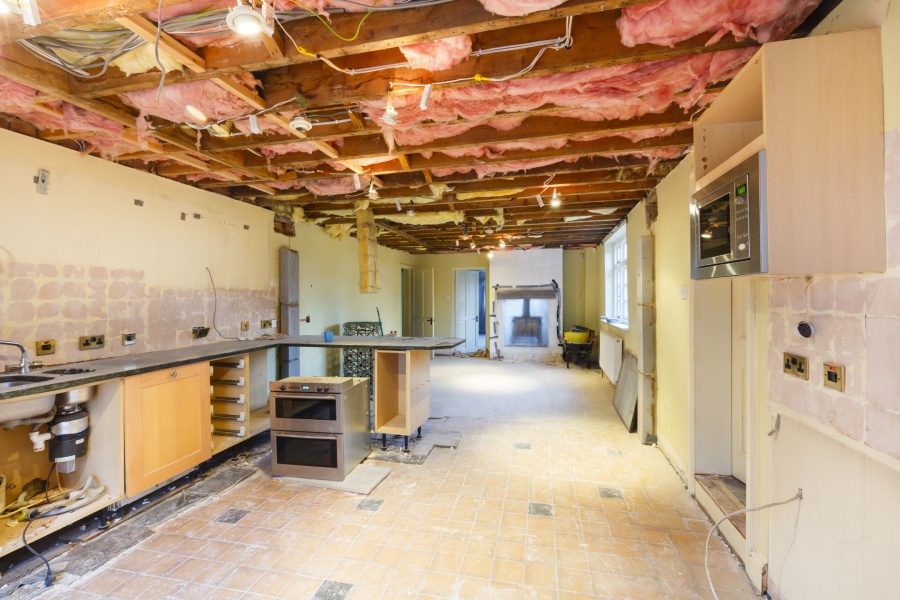Please keep in mind that proper preparation is crucial while starting any DIY project. Maintaining a clean workspace has already been covered in a previous post, but being properly prepared involves more than that. You must be at ease employing force, being physically active, and handling heavy tools and equipment.
Use the proper personal protective equipment, and if there is anything about which you are unsure, see a specialist.
To remove items like powerpoints and disconnect appliances, keep in mind that only licenced electricians and plumbers can do so.

Check out our guide below for some advice if you plan to demo your current kitchen yourself:
Deactivate your electricity
Turn off the mains at your home, and consider tape the mains box shut to prevent inadvertent power re-on. Invest in a voltage tester from your neighbourhood Bunnings Warehouse to make sure that no appliances are powered by electricity. Before removing your kitchen, be sure to hire a trained electrician to remove any powerpoints and secure any cables.
Shut off the water
Turn off the water to your home to avoid a flooded home and plenty of trouble. Your local council might be able to guide you if you’re unsure of where to switch off your water. Never be reluctant to contact a specialist if necessary.
Safeguard Your Flooring
To protect your floors, cover them with hardboard or a drop cloth. You should protect your flooring from scratches, dents, and other damage during demolition because it is filthy job. You will eventually drop something heavy or dragged something sharp, we promise!
Remove any artwork and furniture
Do you want to protect your artwork, light fixtures, and handles? Then take them out, mark them, and put them away securely. Any light fixtures that need to be removed will be helped by a skilled electrician.
Close off your area
If possible, try to close off your work area. This will aid in preventing dust and filth from entering the rest of your house.
Use the right tools
Do some research and speak to the right people about what tools to use. It will keep you safer, keep your demo cleaner and best of all will make your life easier! Suggested tools might be a drill, hammer, pry bar, scraper and a circular saw.
Hire a skip bin
Don’t forget to hire a skip or a rubbish trailer before you start demolition. You don’t want building materials lying around your home – it’s asking for trouble.
Demolition Stages
Before you begin any demolition, put on your personal protection equipment.
Sink
Use a Stanley knife to carefully cut the silicone bead, and then a pry bar and hammer to assist push it out. You might also use wooden planks to help lift the sink out of place once you get one edge out.
base cupboards
Take out the shelves, doors, and drawers. When your new kitchen is built, store and label all of your kitchenware so that they are simple to find. Any screws holding the cabinets to the walls can now be removed. You might need to use a pry bar to remove the cabinets if they are glued to the wall. Remove any screws holding the cabinets together once they are detached from the wall. Finally, disassemble the carcas and place it elsewhere, preferably in a skip bin, away from your work area. Help the next user of the kitchen by bagging the screws and labelling the components as you go if it will be used by someone else in the future.
wall cupboards
In order to use the current base cabinets as a resting point, it is advised that you remove your wall cabinets before any base cabinets. It’s preferable to utilise two sets of hands or, if you have one, a cabinet support in this situation. Find the screws holding your cabinet to the wall first. The screws keeping your cabinets together should then be removed first. After doing that, gently remove the cabinets’ wall-mounting screws and lower them to the ground. As noted above, you can either save and mark any parts or just toss the old kitchen in the skip bin.
Appliances
Before removing any appliances, check with your voltage tester to be sure there is no electricity running through them. Remember to cut off your gas, water, and power before moving any appliances.
By taking your time with demolition, you may minimise damage to your house and keep the work area secure.
*Be careful to get in touch with a licenced builder, electrician, and plumber before disconnecting or re-connecting any services. Someone with little experience or someone who is not qualified to handle such activities shouldn’t take on this work.
Contact us to today if you need kitchen removal services.



